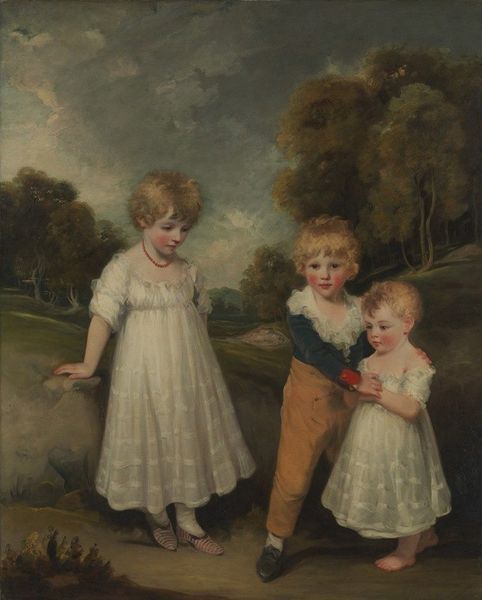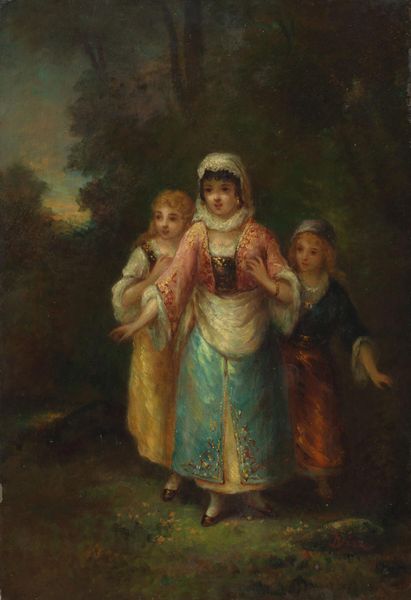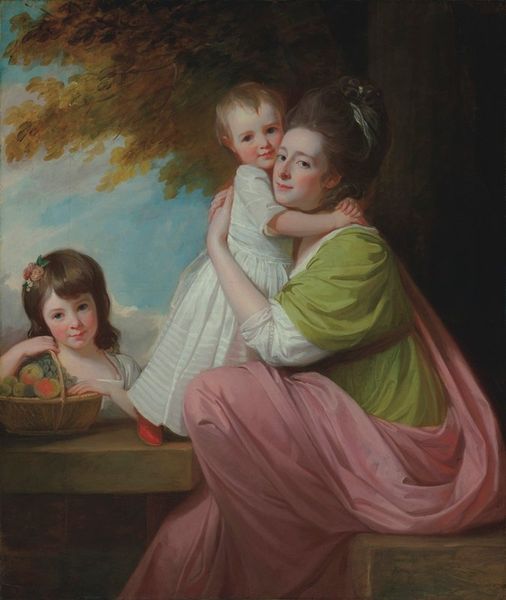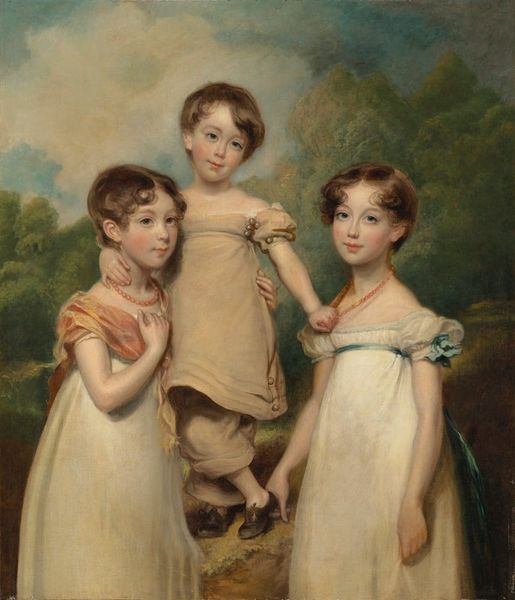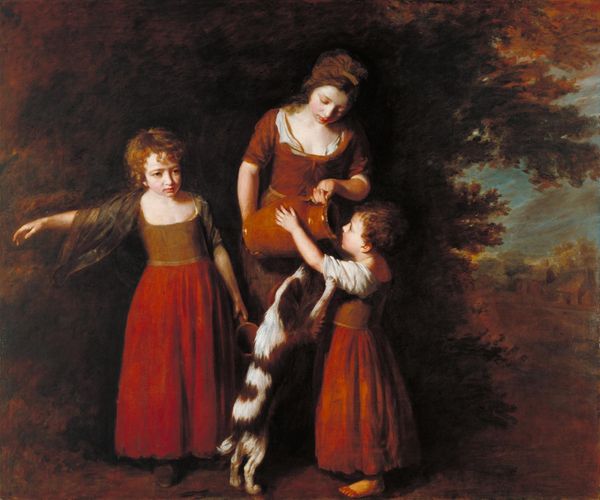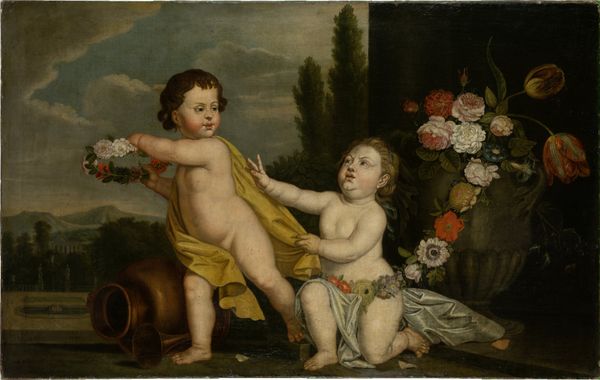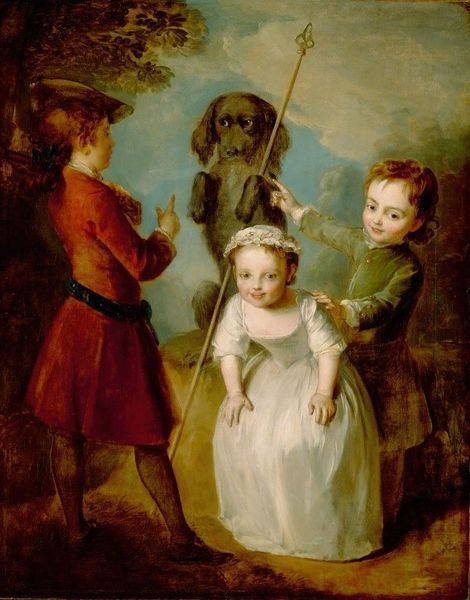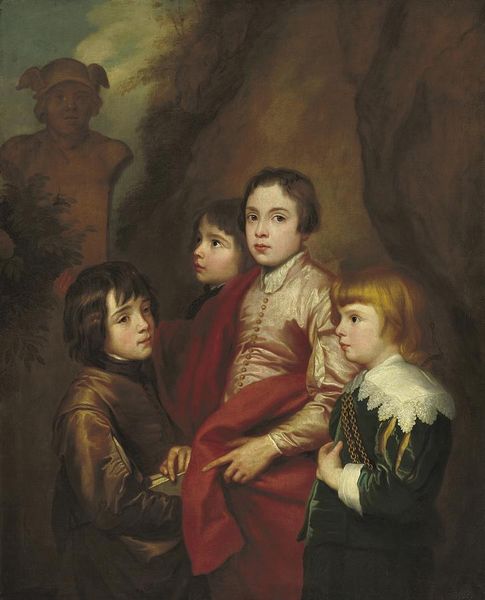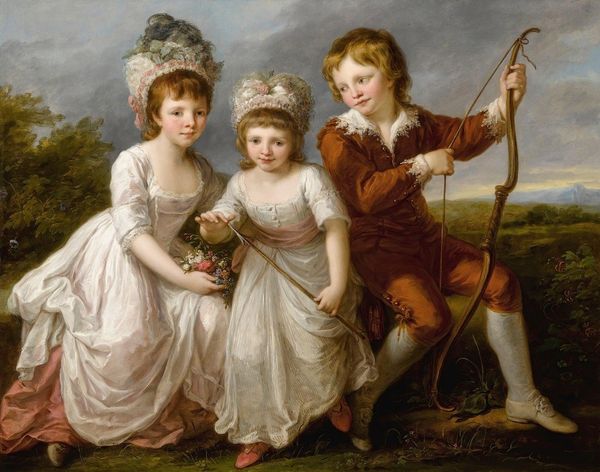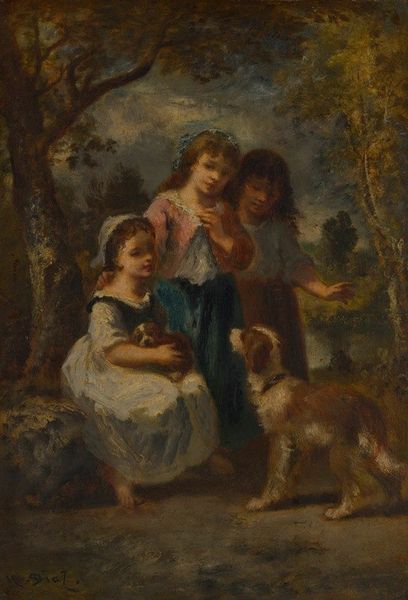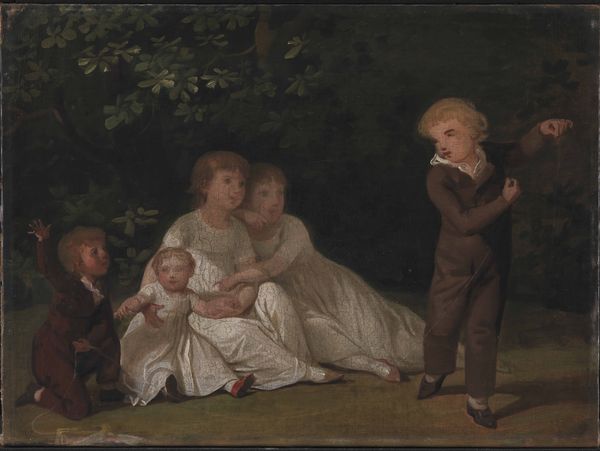
The Grandchildren of Sir William Heathcote, 3rd Baronet 1789 - 1825
0:00
0:00
#
portrait
#
gouache
#
girl
#
fantasy art
#
boy
#
possibly oil pastel
#
green background
#
underpainting
#
surrealism
#
painting painterly
#
surrealist
#
watercolor
#
celebrity portrait
Dimensions: 55 1/4 x 67 1/2 in. (140.3 x 171.5 cm)
Copyright: Public Domain
Curator: Looking at this painting, my first impression is one of sentimental childhood innocence, bathed in the golden light of a bygone era. Editor: Yes, "The Grandchildren of Sir William Heathcote, 3rd Baronet" by William Owen certainly evokes that sentiment. It's fascinating how such imagery shaped societal views on childhood during the late 18th and early 19th centuries. Curator: Absolutely. Notice how the children are positioned, seemingly unburdened, amidst a landscape that feels both idyllic and somewhat symbolic? The young girl carrying wheat—a harvest offering, perhaps representing future prosperity or family legacy? Editor: The wheat is interesting. Considering the Heathcote family's position within the landed gentry, wheat connects directly to notions of agricultural wealth and aristocratic identity. How consciously was Owen using that symbolism, though? Commissioned portraits often became tools for projecting a certain image of a family. Curator: I agree. And there’s a tenderness here. The sleeping child represents vulnerability, perhaps innocence threatened. Note the dark tree canopy hovering over the children in contrast to the field in the distance: it suggests life’s looming realities even in a world created to portray ease and promise. Editor: It's a romanticized image, definitely. But consider the art market; portraying children in such a way served the desires of wealthy patrons who sought to publicly affirm their family lineage. The setting becomes almost secondary, simply backdrop for propagating idealised representation of their children. Curator: I find it telling, how the imagery speaks to enduring ideals. Looking back, we may consider the Heathcotes' vision or need, but consider: familial legacy, beauty, promise – all powerful human symbols transcending that family’s historical time. Editor: Perhaps that says more about our contemporary yearning for similar certainties! Still, this portrait acts as a powerful cultural artefact, showing the ways wealth and representation intertwined to produce images serving very specific socio-political ends. It makes you consider what is really communicated and by whom. Curator: A somber counterpoint… Yet perhaps it affirms the portrait’s strength – its multiple symbolic functions that provoke and prompt debate and continuous observation! Editor: Indeed. Regardless of the original intentions, the image invites us to reflect both on its historical context and our own perceptions of family, class, and art's public role today.
Comments
No comments
Be the first to comment and join the conversation on the ultimate creative platform.
